Report reveals 'IRA Guildford pub bombing cell' activities
- Published
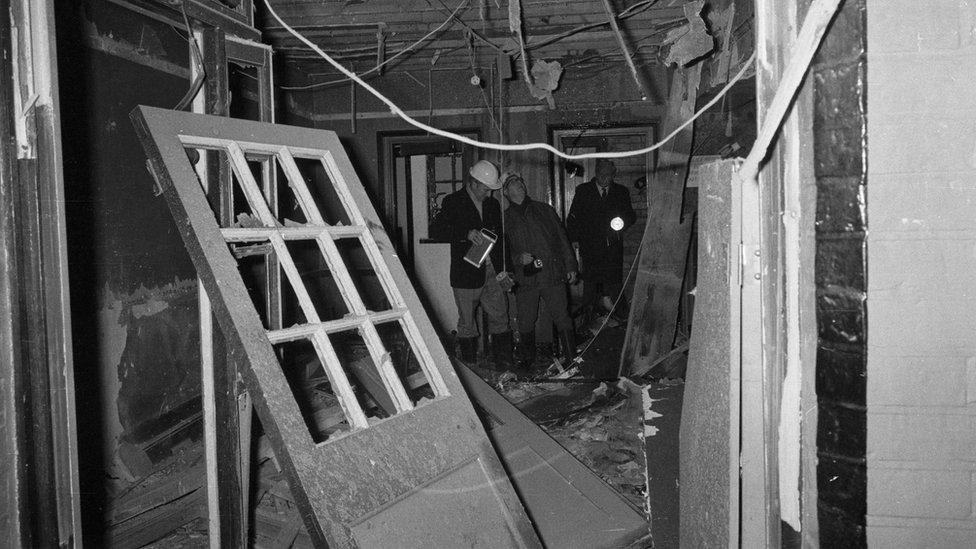
The Guildford pub bombings killed five people, injured 65 and saw 11 wrongly convicted
A report that is set to be omitted from an inquest into the Guildford bombings contains key details on IRA activities before the attack, the BBC has learned.
The BBC has seen a copy of the 1975 Habershon report, which contains bomb squad intelligence, including details of terror suspects linked to Guildford.
Papers from an inquest said the report did not appear to fall within scope.
However, lawyer Alastair Logan said the document raised the question of whether the bombings could have been prevented.
The bombings in the Surrey town on 5 October 1974 killed four soldiers, a civilian and injured 65.
Eleven people - the Guildford Four and the Maguire Seven - were wrongly convicted in what became one of Britain's biggest miscarriages of justice.
Mr Logan, who represented the wrongly-convicted Guildford Four, said the report by bomb squad commander Roy Habershon in September 1975 showed police were aware of offences committed prior to the Guildford bombings.
He said: "They must have had some view an active service unit was operating.
"It raises the question of how much they knew at the time the bombings took place and it raises the spectre that they might have been able to prevent it from happening."

Four soldiers and a civilian died in the first attack at the Horse and Groom
The 30-page document, which has attached schedules linking 31 IRA suspects to incidents in Ireland, the England "provinces" and London, states it "deals comprehensively with the activities between August 1974 and February 1975 of a Provisional IRA active service unit (ASU)".
A grid lists eight incidents predating the Guildford attacks, including bombings, a shooting and a stolen car, and links them to 12 alleged IRA members.
Some of these individuals were part of the ASU that later claimed responsibility for bombing Guildford in 1976, when Martin Joseph O'Connell and Brendan Dowd said they had carried out the attacks, with others.
Both Dowd and O'Connell were jailed in the 1970s and freed during the Northern Ireland peace process.
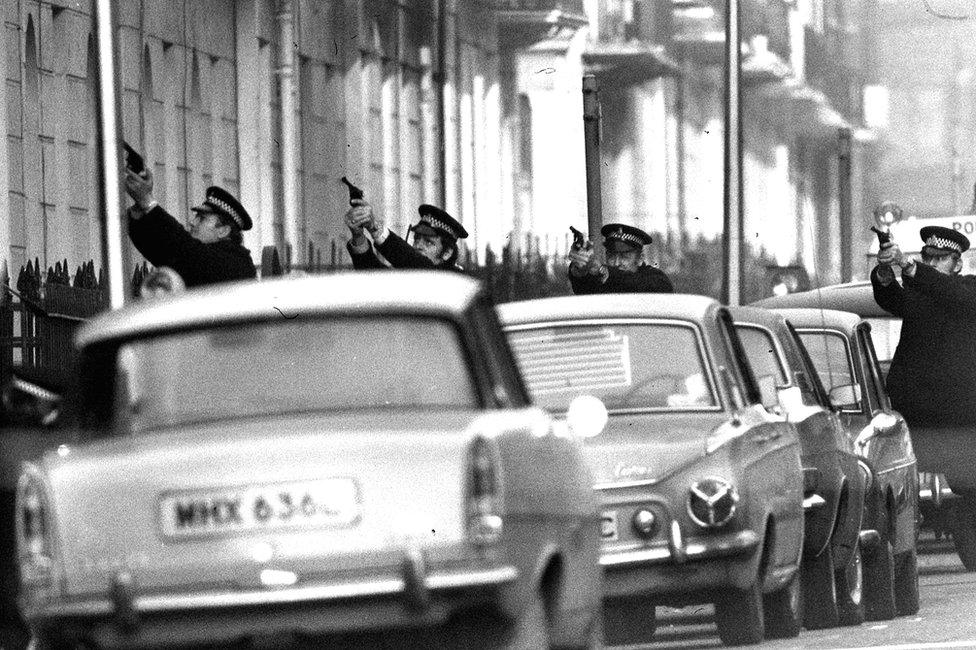
Four men were jailed after the Balcombe Street siege in December 1975 - one of them, Martin Joseph O'Connell, later said he was at Guildford
The BBC has been given the names of a five-strong bombing team - two men and a woman who bombed the Seven Stars and a man and a woman who bombed the Horse and Groom - but the names cannot be reported for legal reasons.
No-one else was prosecuted after the Guildford Four were released. Surrey Police have confirmed the police investigation into Guildford remains closed.
Papers from an inquest that resumed in 2019 revealed Met Police officers reviewed the Habershon report to assist the coroner and a copy was obtained. However the papers stated the report "does not appear to fall within the scope of the inquests".

The wrongly-convicted Guildford Four served 15 years in jail
Investigative journalist Ros Franey, who exposed the wrongful convictions in the 1980s, said: "It's simply not true to say there's nothing in the Habershon report that's relevant to the inquest - because it goes to the heart of what happened."
She said survivors and the victims' families deserved more from the inquest and needed to know "what went wrong, why they were misled and why the wrong was never put right".
Coroner Richard Travers, who set a provisional scope in 2019 and is expected to determine his scope at the next hearing on 16 July, has been approached for comment.
The Judiciary, Home Office and Surrey Police referred the BBC to the coroner.
A Met Police spokesman said: "It is for the coroner to determine any scope of the inquest and we have cooperated fully with all requests for disclosure."
Judge's closed archive
The document seen by the BBC was a copy of the Habershon report and was verified against extracts broadcast in the 1990s.
The official version remains in an archive, external which is closed to the public and was retained by the Home Office as it considered any impact on future investigations.
The revelations over the Habershon report are the latest to have arisen in relation to the archive since the BBC accessed six files of working papers in 2016.
The closed archive from an inquiry into the wrongful convictions by Sir John May has been the focus of accusations of cover-ups and secrecy over the pub bombings and the miscarriage of justice.
Kevin Winters, from KRW Law, which represents the family of victim Ann Hamilton and survivor Yvonne Tagg in the inquest, said: "We say that the full outworkings of the May inquiry points to evidence of perverting the course of justice by the authorities.
"It's an incredibly difficult task after all these years to unpick what happened in the original investigation but as we've seen so many times before trying to get justice is often a very long arduous journey."
The closed archive has been accessed by the inquest.
In 2017, a freedom of information request by Mr Logan to see the Habershon report was refused because of a "risk to national security and prejudice to law and order".
He has now made a fresh request to see the official files.

What the file contained
The BBC was shown a file of bomb squad papers which included the Habershon report. Documents included:
A list of people wanted by the bomb squad and in custody or believed to be living in the Republic of Ireland for whom there was evidence to arrest them in September 1975
An 11-page memo dated 8 December 1975 - at the time of the notorious Balcombe Street siege, external - looking at an individual IRA member who the BBC has been told bombed the Seven Stars
A flow chart linking attacks across Ireland, England and London from 1974 to 1976, including 11 offences in 1974
A grid linking names of suspects with locations of attacks
Handwritten notes in 1977 questioning the lack of fingerprint evidence against the Guildford Four
The 30-page Habershon report which looked in detail at the ASU and its members, including a man who the BBC has been told bombed the Horse and Groom

Follow BBC South East on Facebook, external, on Twitter, external, and on Instagram, external. Send your story ideas to southeasttoday@bbc.co.uk.
Related topics
- Published29 March 2021
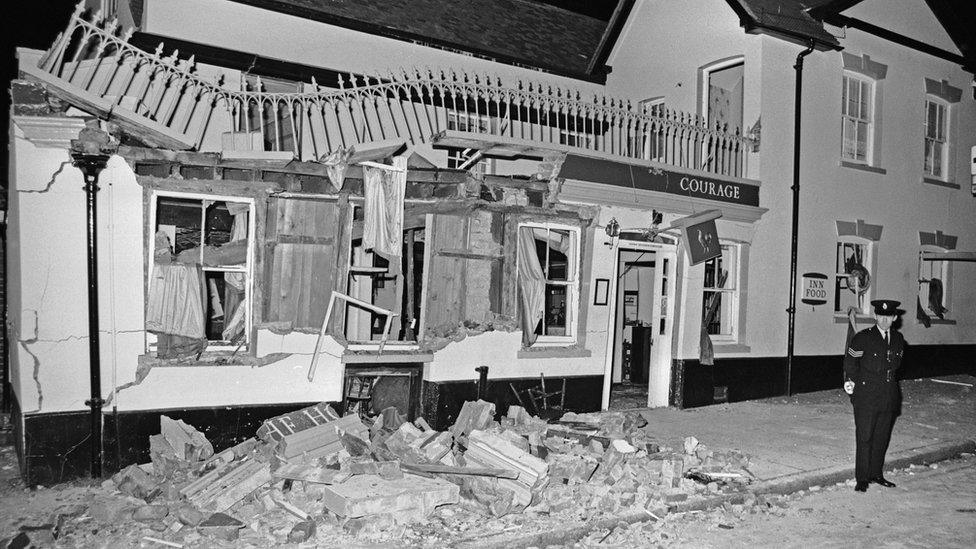
- Published31 December 2019
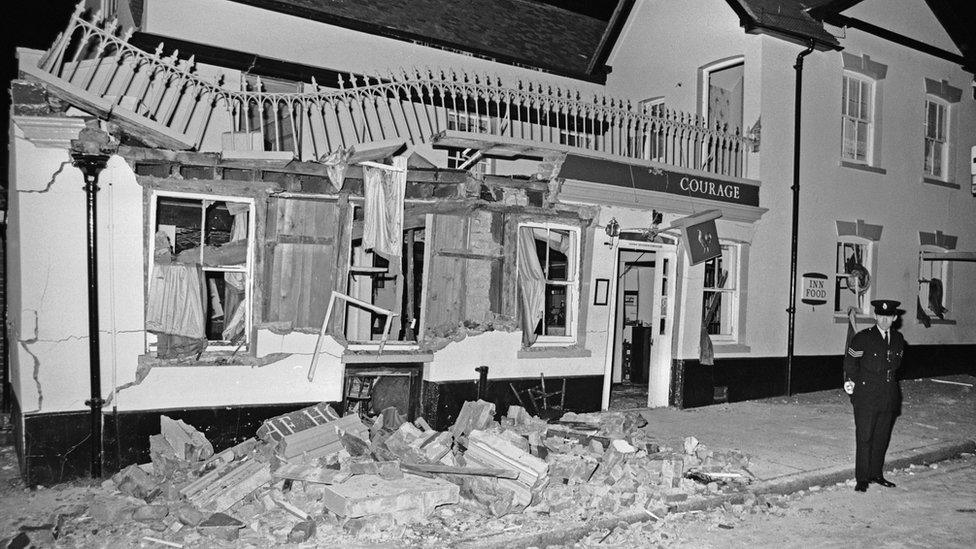
- Published31 January 2019

- Published27 October 2016
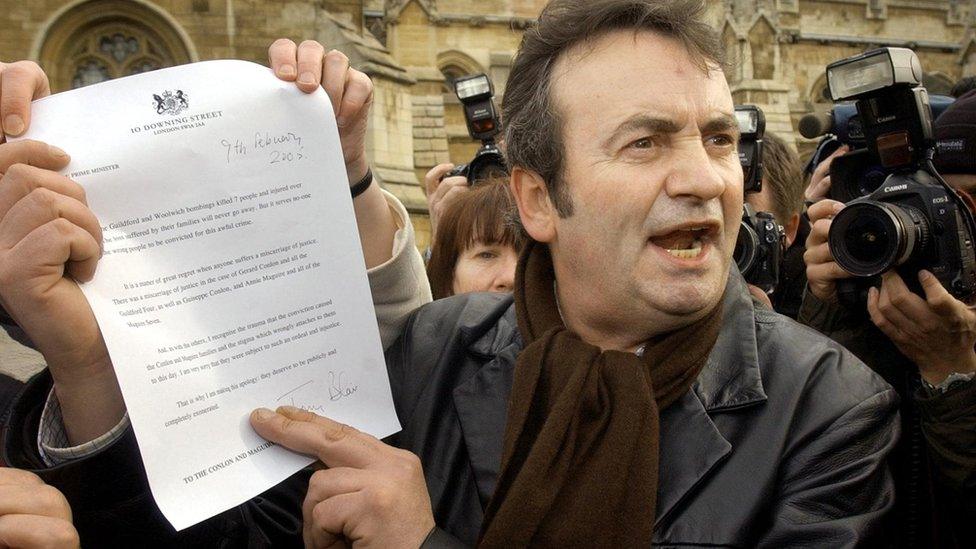
- Published27 October 2016
